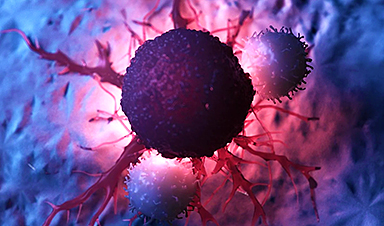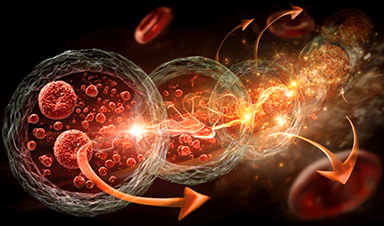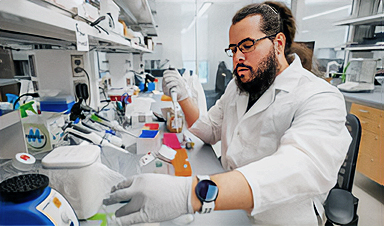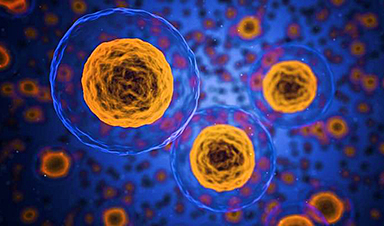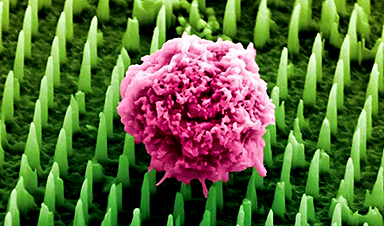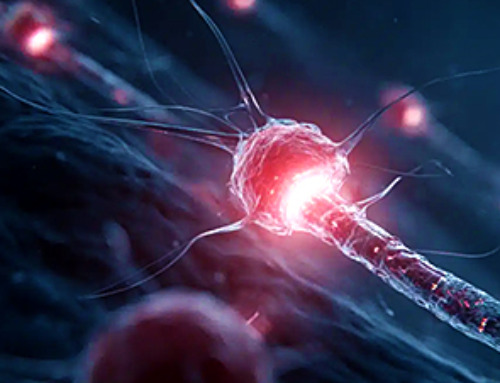Scientists have found toxic PFAS in drinking water samples from around the world, with higher levels in tap water from China compared to the UK. Boiling water or using a filtration jug can reduce PFAS levels by up to 90%, offering a simple solution to minimize exposure.
A new study reveals that scientists have found toxic ‘forever chemicals’ in drinking water samples from across the globe.
Researchers discovered 10 ‘target’ PFAS (perfluoroalkyl substances)—chemicals resistant to environmental breakdown—in tap and bottled water available for consumption in major cities across the UK and China. Perfluorooctanoic acid (PFOA) and perfluorooctane sulfonate (PFOS) were found in over 99% of bottled water samples collected from 15 countries worldwide.
They observed significant differences in PFAS concentrations between tap water samples from Birmingham, UK, and Shenzhen, China, with Chinese tap water found to have higher concentrations of PFAS compared to UK tap water.
However, the study demonstrates that measures such as boiling and/or activated carbon filtration – typically using a ‘jug’ water filter – can substantially reduce PFAS concentrations in drinking water, with removal rates ranging from 50% to 90% depending on the PFAS and treatment type.
Study Findings and Practical Solutions
Publishing their findings in ACS ES&T Water, researchers from the University of Birmingham, Southern University of Science and Technology, Shenzhen, and Hainan University, Haikou, reveal a wide range of PFAS contamination for target PFAS, starting at 63% of bottled waters tested.
Co-author Professor Stuart Harrad, from the University of Birmingham, commented: “Our findings highlight the widespread presence of PFAS in drinking water and the effectiveness of simple treatment methods to reduce their levels. Either using a simple water filtration jug or boiling the water removes a substantial proportion of these substances.
“While current PFAS levels in most water samples are not a major health concern, ongoing monitoring and regulation are crucial to protect public health. We provide valuable data on the presence of PFAS in drinking water alongside practical solutions to mitigate consumer exposure via drinking water. This is a significant step towards ensuring safer drinking water for communities worldwide.”
Bottled water from various countries showed varying levels of PFAS, with natural mineral water containing higher concentrations than purified water, but the concentrations were generally below health advisory levels set by regulatory agencies.
Co-author Professor Yi Zheng, from Southern University of Science and Technology, commented: “Increased awareness about the presence of PFAS in both tap and bottled water can lead to more informed choices by consumers, encouraging the use of water purification methods.
Our findings also suggest that the potential health risks of PFAS in drinking water may be influenced by lifestyle and economic conditions, highlighting the need for future research to further explore these factors from a socio-economic perspective.”
PFAS Levels in Bottled Water and Tap Water
Except for comparisons between natural mineral and purified water, the researchers observed no significant difference in target PFAS concentrations between glass and plastic or still and sparkling bottled water.
While concentrations of most individual PFAS were well below corresponding health-based reference values, average PFOS concentrations in tap water samples from Shenzhen, China exceeded the maximum contaminant level (MCL) of 4 ng/L newly promulgated by the US Environmental Protection Agency (USEPA) in 2024.
Researchers purchased 112 bottled water samples from local shops and online supermarkets in the UK and China including 89 still and 23 sparkling waters in either plastic or glass bottles. The samples covered 87 brands with water sources originating from 15 countries in Asia, Europe, North America, and Oceania
They collected 41 tap water samples from homes in Birmingham and the nearby cities of Worcester, Coventry, and Derby – provided by two suppliers: South Staffordshire Water and Seven Trent Water, with a further 14 tap water samples collected from homes in Shenzhen, China.
PFAS are used widely in industry, in fire-fighting foams, and consumer products from waterproof clothing and school uniforms to personal care products because of their water and stain-repellent properties. While some have been banned by government regulation, others are still widely used and their toxic effects have not yet been fully investigated.
The chemicals are already known to enter the body in different ways, for example being breathed in, ingested via food or drinking water, or absorbed through the skin. They are known to cause adverse health effects such as a lowered immune response to vaccination, impaired liver function, decreased birth weight, and increased risk of some cancers.
Reference: “Factors Influencing Concentrations of PFAS in Drinking Water: Implications for Human Exposure” by Chuanzi Gao, Daniel Simon Drage, Mohamed Abou-Elwafa Abdallah, Feng Quan, Kun Zhang, Shiyao Hu, Xue Zhao, Yi Zheng, Stuart Harrad and Wenhui Qiu, 17 October 2024, ACS ES&T Water.
DOI: 10.1021/acsestwater.4c00533
News
Drug-Coated Neural Implants Reduce Immune Rejection
Summary: A new study shows that coating neural prosthetic implants with the anti-inflammatory drug dexamethasone helps reduce the body’s immune response and scar tissue formation. This strategy enhances the long-term performance and stability of electrodes [...]
Scientists discover cancer-fighting bacteria that ‘soak up’ forever chemicals in the body
A family of healthy bacteria may help 'soak up' toxic forever chemicals in the body, warding off their cancerous effects. Forever chemicals, also known as PFAS (per- and polyfluoroalkyl substances), are toxic chemicals that [...]
Johns Hopkins Researchers Uncover a New Way To Kill Cancer Cells
A new study reveals that blocking ribosomal RNA production rewires cancer cell behavior and could help treat genetically unstable tumors. Researchers at the Johns Hopkins Kimmel Cancer Center and the Department of Radiation Oncology and Molecular [...]
AI matches doctors in mapping lung tumors for radiation therapy
In radiation therapy, precision can save lives. Oncologists must carefully map the size and location of a tumor before delivering high-dose radiation to destroy cancer cells while sparing healthy tissue. But this process, called [...]
Scientists Finally “See” Key Protein That Controls Inflammation
Researchers used advanced microscopy to uncover important protein structures. For the first time, two important protein structures in the human body are being visualized, thanks in part to cutting-edge technology at the University of [...]
AI tool detects 9 types of dementia from a single brain scan
Mayo Clinic researchers have developed a new artificial intelligence (AI) tool that helps clinicians identify brain activity patterns linked to nine types of dementia, including Alzheimer's disease, using a single, widely available scan—a transformative [...]
Is plastic packaging putting more than just food on your plate?
New research reveals that common food packaging and utensils can shed microscopic plastics into our food, prompting urgent calls for stricter testing and updated regulations to protect public health. Beyond microplastics: The analysis intentionally [...]
Aging Spreads Through the Bloodstream
Summary: New research reveals that aging isn’t just a local cellular process—it can spread throughout the body via the bloodstream. A redox-sensitive protein called ReHMGB1, secreted by senescent cells, was found to trigger aging features [...]
AI and nanomedicine find rare biomarkers for prostrate cancer and atherosclerosis
Imagine a stadium packed with 75,000 fans, all wearing green and white jerseys—except one person in a solid green shirt. Finding that person would be tough. That's how hard it is for scientists to [...]
Are Pesticides Breeding the Next Pandemic? Experts Warn of Fungal Superbugs
Fungicides used in agriculture have been linked to an increase in resistance to antifungal drugs in both humans and animals. Fungal infections are on the rise, and two UC Davis infectious disease experts, Dr. George Thompson [...]
Scientists Crack the 500-Million-Year-Old Code That Controls Your Immune System
A collaborative team from Penn Medicine and Penn Engineering has uncovered the mathematical principles behind a 500-million-year-old protein network that determines whether foreign materials are recognized as friend or foe. How does your body [...]
Team discovers how tiny parts of cells stay organized, new insights for blocking cancer growth
A team of international researchers led by scientists at City of Hope provides the most thorough account yet of an elusive target for cancer treatment. Published in Science Advances, the study suggests a complex signaling [...]
Nanomaterials in Ophthalmology: A Review
Eye diseases are becoming more common. In 2020, over 250 million people had mild vision problems, and 295 million experienced moderate to severe ocular conditions. In response, researchers are turning to nanotechnology and nanomaterials—tools that are transforming [...]
Natural Plant Extract Removes up to 90% of Microplastics From Water
Researchers found that natural polymers derived from okra and fenugreek are highly effective at removing microplastics from water. The same sticky substances that make okra slimy and give fenugreek its gel-like texture could help [...]
Instant coffee may damage your eyes, genetic study finds
A new genetic study shows that just one extra cup of instant coffee a day could significantly increase your risk of developing dry AMD, shedding fresh light on how our daily beverage choices may [...]
Nanoneedle patch offers painless alternative to traditional cancer biopsies
A patch containing tens of millions of microscopic nanoneedles could soon replace traditional biopsies, scientists have found. The patch offers a painless and less invasive alternative for millions of patients worldwide who undergo biopsies [...]



